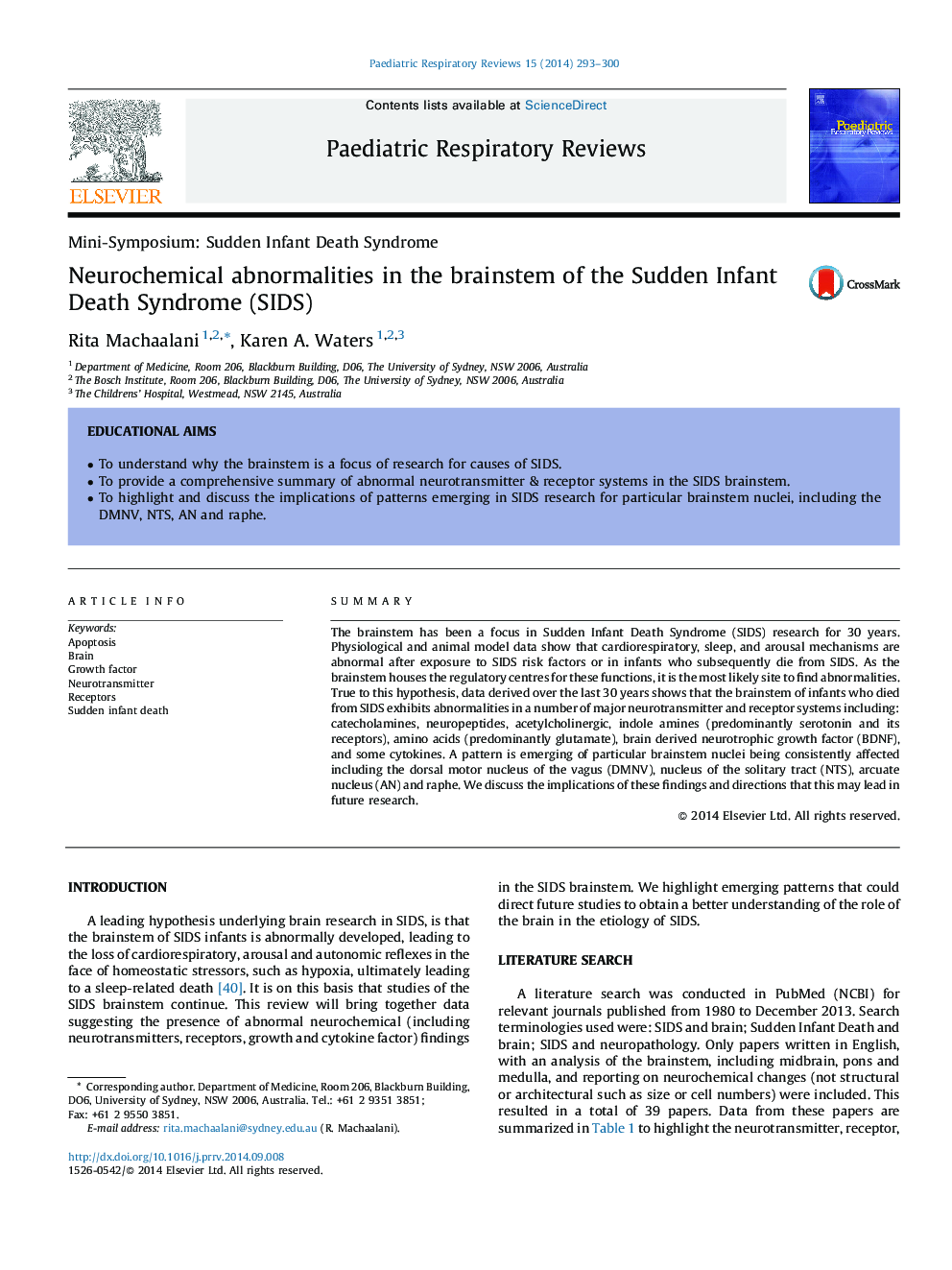| Article ID | Journal | Published Year | Pages | File Type |
|---|---|---|---|---|
| 4170872 | Paediatric Respiratory Reviews | 2014 | 8 Pages |
SummaryThe brainstem has been a focus in Sudden Infant Death Syndrome (SIDS) research for 30 years. Physiological and animal model data show that cardiorespiratory, sleep, and arousal mechanisms are abnormal after exposure to SIDS risk factors or in infants who subsequently die from SIDS. As the brainstem houses the regulatory centres for these functions, it is the most likely site to find abnormalities. True to this hypothesis, data derived over the last 30 years shows that the brainstem of infants who died from SIDS exhibits abnormalities in a number of major neurotransmitter and receptor systems including: catecholamines, neuropeptides, acetylcholinergic, indole amines (predominantly serotonin and its receptors), amino acids (predominantly glutamate), brain derived neurotrophic growth factor (BDNF), and some cytokines. A pattern is emerging of particular brainstem nuclei being consistently affected including the dorsal motor nucleus of the vagus (DMNV), nucleus of the solitary tract (NTS), arcuate nucleus (AN) and raphe. We discuss the implications of these findings and directions that this may lead in future research.
